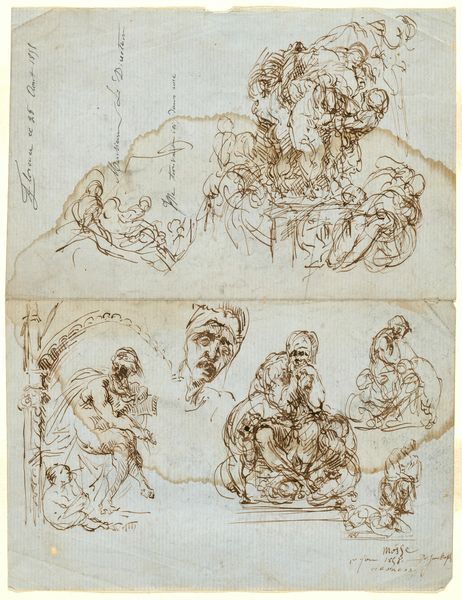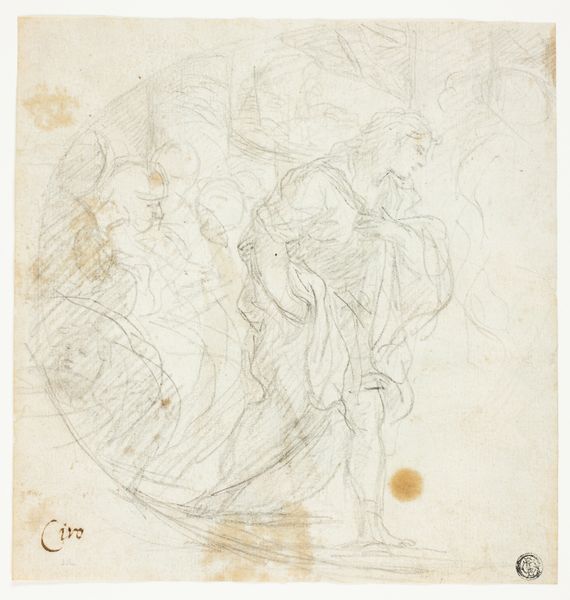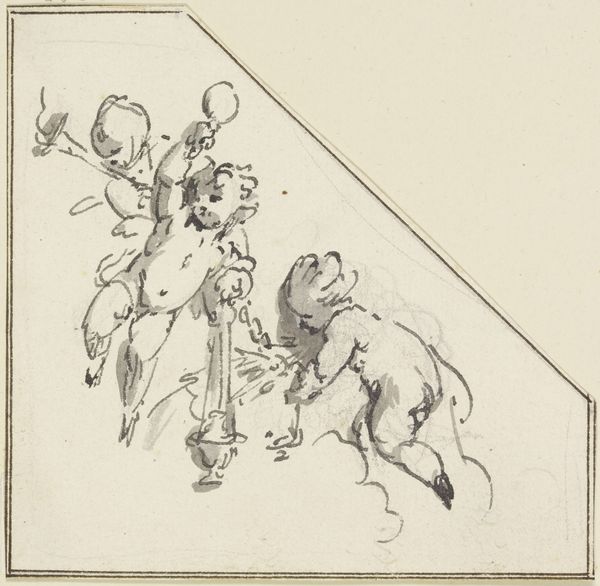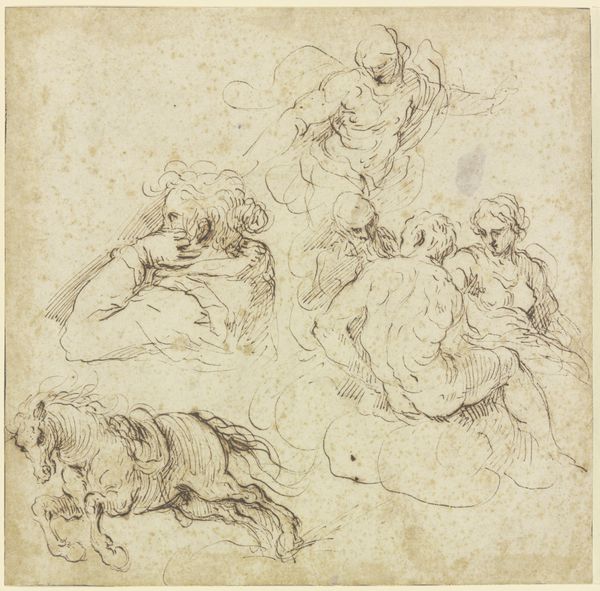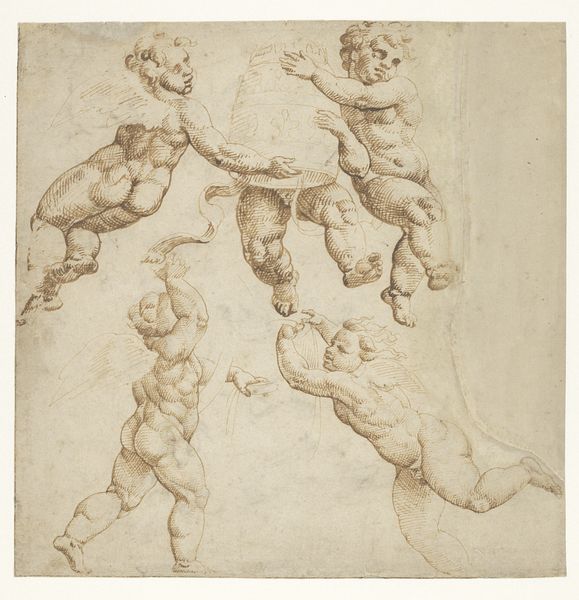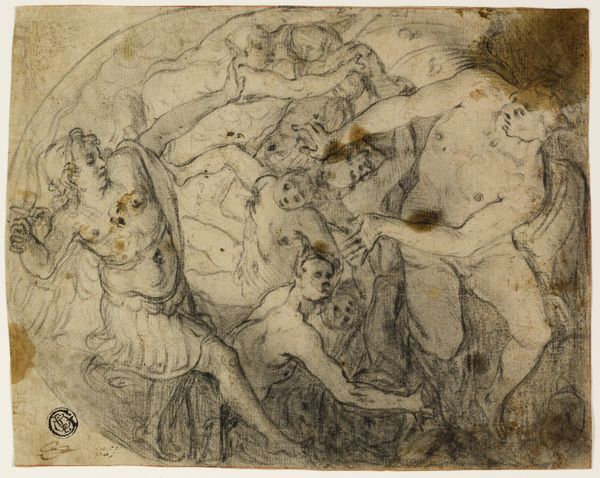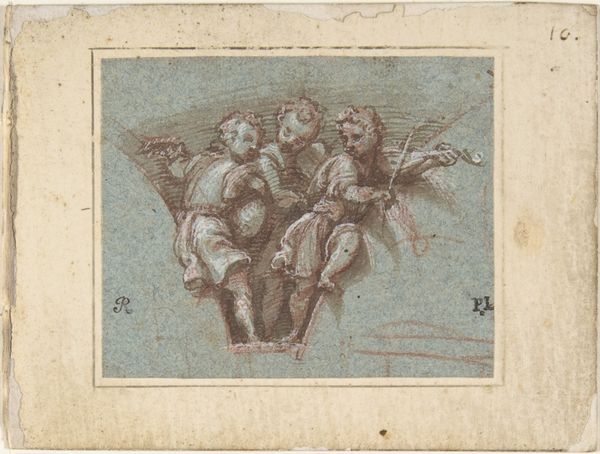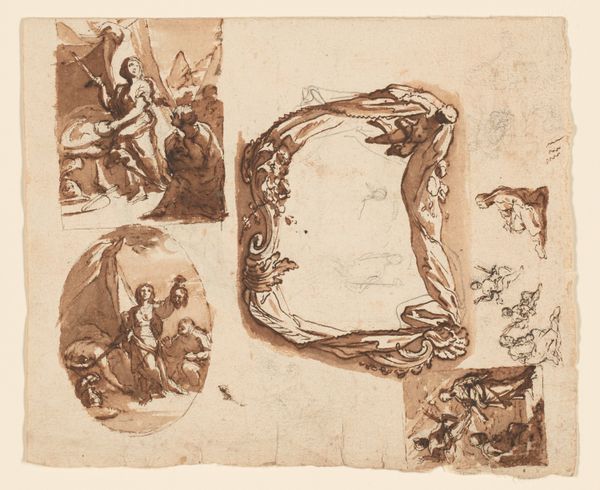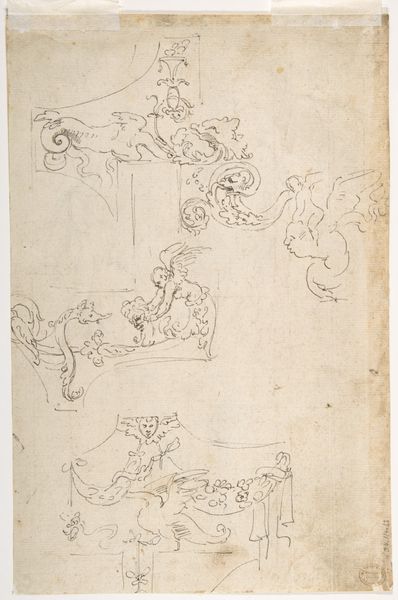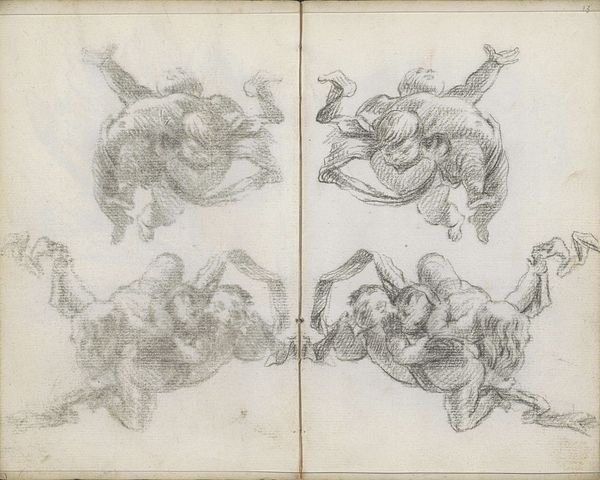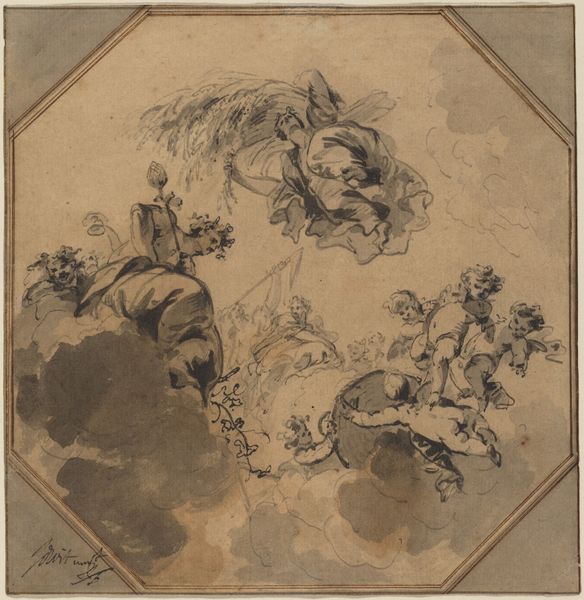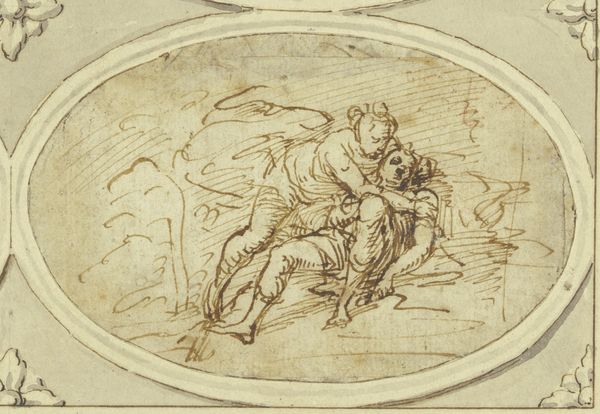
Studies for the Education of the Virgin 1692 - 1758
0:00
0:00
drawing, ink
#
portrait
#
drawing
#
figuration
#
ink
#
italian-renaissance
Dimensions: 8 7/16 x 8 15/16in. (21.5 x 22.7cm)
Copyright: Public Domain
Curator: Agostino Masucci, active in the late 17th to mid-18th century, is credited as the artist behind the drawing presented here, "Studies for the Education of the Virgin." Executed in ink, this artwork now resides at the Metropolitan Museum of Art. Editor: At first glance, the drawing's freehand sketch style gives the image an unfinished, preparatory quality. But that candid quality provides real emotional expression through gestural depictions of motherhood. Curator: It is crucial to consider how this was made; this study of possible groupings likely served a purpose, as a precursor for another work that might depict Saint Anne, the Virgin's mother, instructing her child Mary. As you see, the compositions showcase various approaches for representing instruction, care, and intimacy. Editor: Indeed, the image conveys layers of symbolic representation. In particular, I see a strong connection with archetypes of motherhood, specifically its sacred associations found across diverse cultural mythologies. I think these echoes expand its symbolic significance far beyond a mere religious lesson. Curator: That resonates given Saint Anne's symbolic role in reinforcing traditional family structures within 18th-century society. Masucci, it seems, uses visual cues to bolster those connections. Editor: I'm struck by the recurring motif of Mary holding the infant Jesus in each study; their poses almost form a sort of emotional compass, suggesting a strong foundation built on the bond between mother and child. Curator: Perhaps reflecting broader ideological concerns about education. The medium, however, is key. This wasn't crafted for display, but for use in the production process. Editor: Well, its production, if you will, achieves that dual effect of spiritual narrative and genuine, human connection that endures. Curator: Absolutely, and considering it’s just ink on paper—the effect feels surprisingly impactful to us centuries later. Editor: It definitely demonstrates the resonance and enduring power that archetypal images possess even in a simple, process-oriented study like this.
Comments
No comments
Be the first to comment and join the conversation on the ultimate creative platform.
